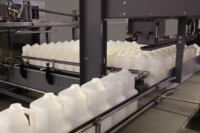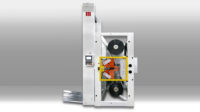Accurate tension measurement and control can go a long way toward reducing the negative effects of process deviations on printed and converted materials in a continuous web process, particularly in cases where flexible, extensible substrates are being run. Physical inconsistencies of difficult substrates can also often be compensated for. Even a press with sophisticated register controls can benefit from the refinement in output quality brought by an accurate transducer-based tension system.
By reducing web scrap and allowing a web press to run at higher speeds with defect-minimized output, a reliable web tension control system will not only improve a press’ bottom line performance, but can often pay for itself in as little as a few weeks. It’s a relatively low-cost machinery upgrade that improves productivity, reduces process waste and makes a converting business more competitive.
One driver of change in the industry is the intense level of business competition in many consumer packaged goods categories. This competition manifests itself in the proliferation of retail-level brand segmentation and customized regional promotions for popular products, particularly in the food and beverage industries. Product line segmentation and the necessity of differentiation have forced increased demand for shorter print runs, faster time to market, brighter colors, more sparkle, longer shelf life and environmental-friendliness for packaging.
Producer cost-containment measures and environmental conservation drivers have pushed the demand for thinner films, improved film barrier characteristics, embedded security technology and package size minimization.
Web machinery builders and press manufacturers have responded to the challenge by designing presses that yield faster turnarounds, greater process versatility, increasing sub-process and finishing capabilities, and the capability to print on a wider variety of substrates. Web printers and film converters are still seeking more economical methods for completing short print runs.
Tension control equipment manufacturers have likewise had to respond to the fast turnaround demands and substrate variety by developing control devices that are quick to install and setup, and easy-to-use. The tension sensors and electronics must operate over a wider substrate tension range, for a broader selection of web widths, in more challenging industrial environments and with more input and output capability.
One new development is the integration of full touch-screen technology into the graphic user interfaces of the tension indication and control electronics. Touch screens provide a more intuitive user experience and replace the need for separate navigation buttons and switches on controller overlays and front panels.



